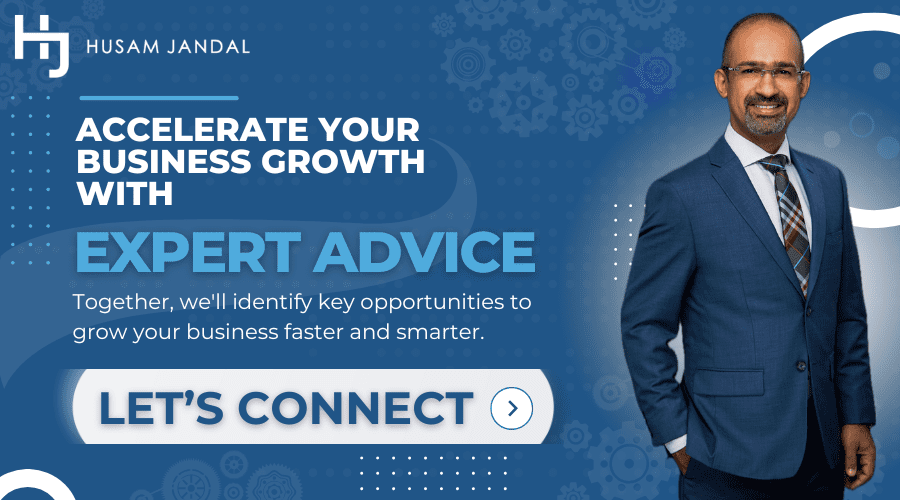 A typical company’s revenue increases just 2.8 percent each year, McKinsey reports. Yet, top performers, accounting for roughly 13 percent of all businesses, manage to consistently boost revenue by 10 to 22 percent annually. What’s the difference between them and the average business? It’s not luck. It’s their revenue optimization strategies.
A typical company’s revenue increases just 2.8 percent each year, McKinsey reports. Yet, top performers, accounting for roughly 13 percent of all businesses, manage to consistently boost revenue by 10 to 22 percent annually. What’s the difference between them and the average business? It’s not luck. It’s their revenue optimization strategies.
What is Revenue Optimization?
Revenue optimization is the process of improving the sum of your business income. That means fine-tuning the four things that grow customer revenue, including:
- Acquisition: Bringing in new customers.
- Retention: Getting customers to stay and renew subscriptions or make repeat purchases.
- Expansion: Upselling or cross-selling to customers.
- Pricing: Identifying the right pricing model and sweet spot for pricing.
When you optimize revenue by addressing these areas, your business grows healthier and stronger. I’ll walk you through what this looks like and provide some general revenue optimization tips below.
Customer Acquisition Optimization
Most businesses zero in on customer acquisition as a top priority. However, you must lay a strong foundation and develop a strategy to produce ongoing results.
Strengthen Your Branding
Effective branding boosts memory recall, differentiates your offerings from competitors, and is instrumental when building relationships. Think beyond branding elements like logos and color palettes and infuse your company’s personality into everything you produce.
Leverage Personas
Create customer personas so it’s easier to craft targeted and personalized digital marketing campaigns that resonate with your audience.
Develop an Effective Unique Selling Proposition
Develop a unique selling proposition (USP) that sets your offerings apart from other brands and makes it easy for prospective customers to know what you stand for.
Focus on the Right Channels
No business can market effectively when it spreads its resources across many marketing channels. Identify which ones work best for your business and funnel your resources toward them.
Improve Sales Efficiency
Consider what happens when your business gets leads, too. A comprehensive lead management strategy with a customer relationship management (CRM) tool and automation will empower your sales team to close more sales in less time.
Customer Retention Optimization
It costs up to 25 times more to attract a new customer than to retain an existing one, Harvard researchers say. Retention also boosts profit. Improving retention by just five percent can increase profit by up to 95 percent, Small Biz Genius reports. Because of this, investing in customer stickiness initiatives can dramatically impact your overall revenue.
Measure and Track Your Retention
As the saying goes, “What gets measured gets managed.” If you want to improve your customer retention, you must also know your retention rate and track it regularly. Use the retention formula below to get a baseline of your customer retention rate (CRR) and measure your success over time.
[(E-N)/S] x 100 = CRR
- E: Customers at End of Period
- N: New Customers Gained During Period
- S: Customers at Beginning of Period
Measure and Track Your Churn
You can also track churn to see if your initiatives are helping and to what degree. Use the churn rate formula below and continue tracking your results as you go.
(Customers Lost / Original Customers) x 100 = Churn Rate
Provide Onboarding
All too often, brands stop nurturing relationships once a sale is made. Ensure customers feel welcome and understand the value your products or services deliver with a comprehensive onboarding process.
Focus on Customer Care
Businesses often focus exclusively on customer service. That’s only a small slice of what customer care entails. Whereas customer service might involve helping a customer solve a problem after a purchase or discover the right solution before a purchase, customer care rises to meet the person’s needs proactively and addresses the emotional aspects. For instance, a customer service professional might help troubleshoot a technical problem, while someone invested in customer care will also provide product usage tips or training at the same time. This minor difference – helping customers get more value from products – gives companies up to 3.5 times more growth, Accenture reports.
Request Feedback Proactively
Reach out to your customers periodically with surveys to see what they like most about working with you and explore opportunities for improvement. Your customers will appreciate the gesture, especially if you follow up with their feedback, and your company will have the information it needs to shore up any weak areas.
Create a Loyalty Program

Roughly three-quarters of consumers say loyalty programs are a meaningful part of their brand relationships, Forbes reports. Develop a program that shows customers you value them and keeps them returning.
Customer Expansion Optimization
The final way to generate revenue is through customer expansion, which is the process of upselling or cross-selling. Many brands have an easier time with this because existing customers are 50 percent more likely to try new products than new customers, according to Invesp research. They also spend 31 percent more than their counterparts. Plus, customers who obtain more than one product or service from your business are more likely to stay.
Promote Similar Products or Services
One approach is to promote products or services to your customers that are similar to something they already have.
For instance, someone shopping for red shoes might like a similar pair in black, or a business owner shopping for loans might be interested in other ways to fund their business.
You can also track when someone’s product or service is likely to reach the end of its lifespan and reach out to them proactively. For example, laptops usually only last three to five years. A company that sells them might start reaching out to a previous buyer just before the three-year mark with replacement offers.
Upgrades fall in this bracket, too. This is common in the travel industry, with options to fly first class, get a luxury car, or stay in a nicer room. However, most businesses offer tiers or different service levels that might interest their customers similarly.
Promote Complementary Products or Services
Another approach is to promote products or services that are often used alongside the one you sell or that the same audience may like.
For example, a business process outsourcing (BPO) company might let their data entry clients know they can also have data scanning services. Similarly, a financial company that purchases invoices, known as a factoring company, might also offer invoice preparation services to its clients.
Pricing Optimization
The final area to address in revenue optimization is pricing. This isn’t as simple as increasing prices to make more money or reducing them to increase sales.
Find Your Sweet Spot
Pricing optimization is all about identifying the right rates to stimulate growth. If you price your offerings too low in an attempt to capture more sales, your audience may perceive the quality as being lesser, too. If you go too high, you can lose sales for being overpriced. Bear in mind that businesses can boost profit by nearly nine percent by increasing prices by just one percent, McKinsey reports. You don’t need to have a huge hike to create dramatic results.
Find your sweet spot. Review competitor pricing and identify what sets them apart from you. Rather than going much higher or much lower than competitors, most businesses will find that their sales perform better when they select rates close to their competitors.
Consider Bundling
Bundling can be a very effective way to optimize pricing because it gives customers greater perceived value. This approach works well if your business offers complementary products or services similar to those covered in the customer expansion ideas earlier.
Explore Tiered Pricing
Most people are familiar with the story of Goldilocks and the Three Bears. Goldilocks is always presented with three options and always selects the one that is just right for her. There’s a similar strategy in pricing, sometimes referred to as the Goldilocks effect or the law of three. If you give your customers three options – a good, a better, and a best option – they’ll almost always pick the middle choice. Explore different tiers you can offer your customers and consider making the middle tier a cut above whatever is considered standard pricing for your business now.
Offer Subscriptions or Memberships
It used to be that only magazines had subscriptions. These days, all sorts of businesses are using some type of subscription or membership model. For instance, medical practices offer memberships that include all doctor visits. Retailers charge monthly fees that include automatic shipment of a product, plus discounts. Consider your business model and whether it’s possible to develop some form of a subscription or membership around it to boost revenue and provide you with more stable income.
Revenue Optimization Tips
Now that we’ve gone over the background, let’s cover some tips that will help you develop your own revenue optimization strategy.
Know Your Customer Lifetime Value
Calculate your customer lifetime value (CLV) and track it like you do other metrics. This will help you allocate resources effectively.
Leverage Data
Ensure you’re getting clean data from your marketing analytics platform, CRM, and other sources to make decisions based on real-world numbers.
Segment Customers
Groups of customers will behave differently. Use your personas to create optimization strategies for each.
Forecast Revenue
Run revenue forecasts under different models as you make decisions, and keep tracking it as you go to ensure you’re on the right track.
Implement Initiatives Strategically
Businesses that try to address all areas of revenue optimization at once spread themselves too thin. Weigh the benefits of each initiative you’d like to implement and make note of any resources that will be required. Then, prioritize the ones with low barriers to entry and maximum potential impact.
Continuously Adapt
Revenue optimization is an ongoing process. Keep a pulse on your business and industry so you can explore new opportunities as they emerge and make adjustments as needed.

Get Help Folding Revenue Optimization into Your Digital Marketing Strategy
As a digital marketing consultant with a background in business, I believe that revenue optimization and traditional digital marketing strategies are both required to help businesses achieve lasting success. If you’d like to build a stronger company while leveraging modern digital marketing practices, contact me for a complimentary consultation.





































































